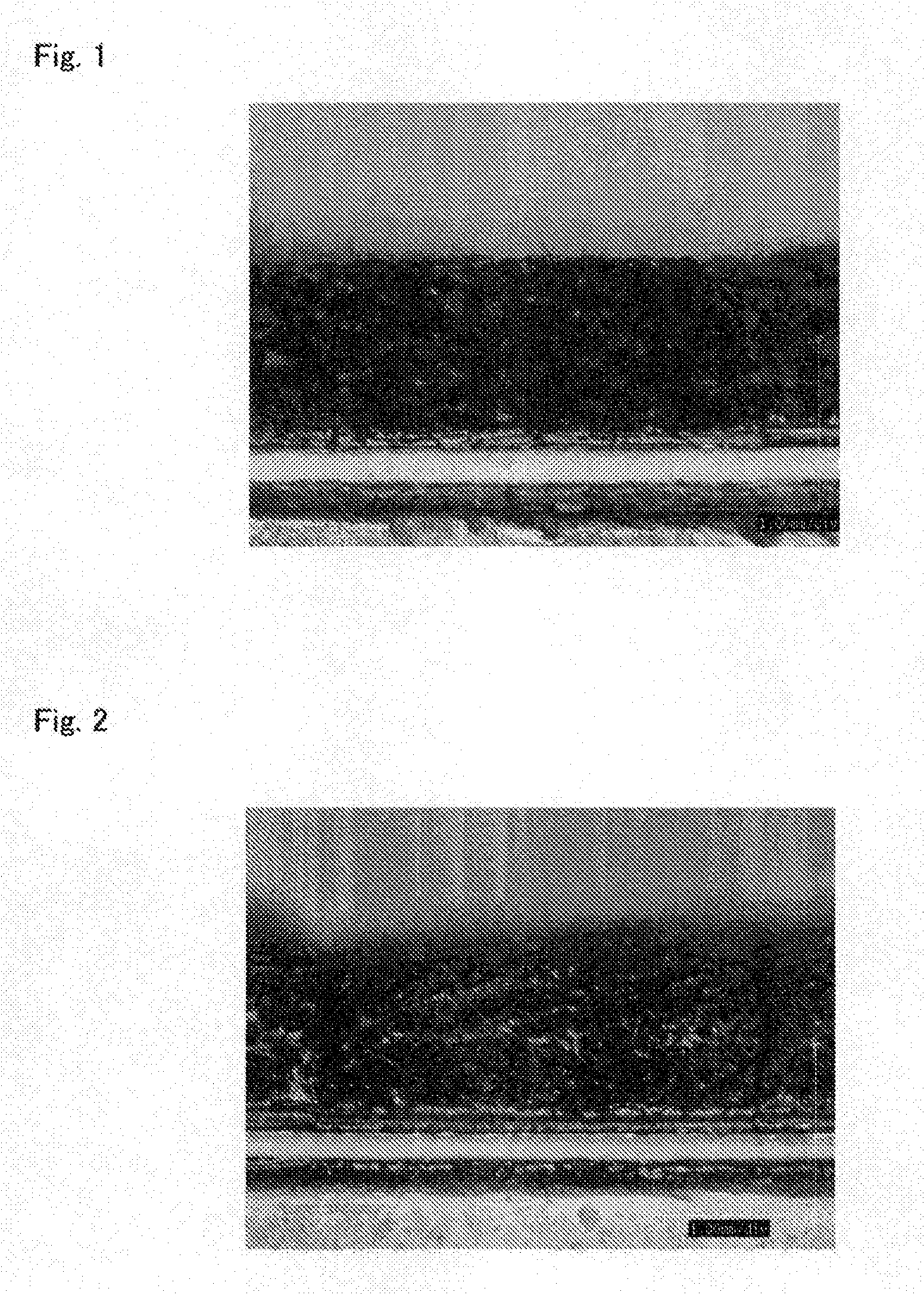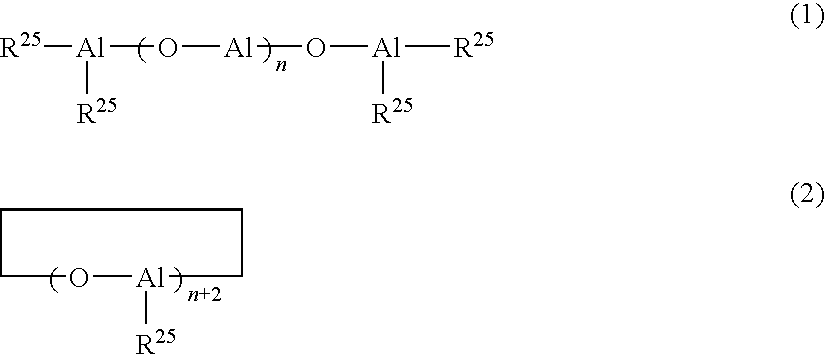Polyolefin resin foam and the process for producing the same
a polyolefin resin and foam technology, applied in the field of polyolefin resin foam, can solve the problems of gas escape and cell linkage, insufficient flexibility and cushioning properties of foams, and difficulty in obtaining soft foams with the desired high foam magnification and high flexibility, and achieve excellent processability, high foaming, and excellent flexibility and cushioning properties
- Summary
- Abstract
- Description
- Claims
- Application Information
AI Technical Summary
Benefits of technology
Problems solved by technology
Method used
Image
Examples
production example 1
[0189]A 36 parts amount of butadiene rubber, 40 parts of an oil-extended EPDM, 14 parts of a thermoplastic resin (trade name “Novatec BC06C”), 10 parts of a paraffin mineral oil and 0.2 parts of an antioxidant were mixed in a Henshel mixer, then the resulting mixture was placed into a pressurized type kneader (capacity 10 l, manufactured by Moriyama K.K.) which had been previously heated to 160° C. Kneading was continued at 40 rpm (shear rate 200 / sec) for 15 minutes until the thermoplastic resin was melted and respective components were homogeneously dispersed, whereby a kneaded product in a molten state was obtained. The kneaded product in a molten state obtained was pelletized by a feederruder (manufactured by Moriyama K.K.). Into a Henshel mixer, 100.2 parts of the palletized kneaded product, 1.0 part of a crosslinking agent and 1.0 part of a crosslinking assistant were placed and mixed for 30 seconds. Thereafter, the resulting mixture was extruded during which it was subjected t...
production example 2
[0190]A 100 parts amount of the palletized product obtained in the Production Example 1 and 25 parts of carbon black were placed into a pressurized type kneader (capacity 10 l, manufactured by Moriyama K.K.) which had been previously heated to 160° C. Kneading was conducted at 40 rpm (shear rate 200 / sec) for 15 minutes until the thermoplastic elastomer composition was melted and respective components were homogeneously dispersed, whereby a kneaded product in a molten state was obtained. The kneaded product in a molten state obtained was pelletized by a feederruder (manufactured by Moriyama K.K.) to obtain a thermoplastic elastomer composition (ii).
production example 3
[0191]A 90 parts amount of an oil-extended EPDM, 10 parts of a thermoplastic resin (trade name “Novatec FA3EB”) and 0.2 parts of an antioxidant were mixed in a Henshel mixer, then the resulting mixture was placed into a pressurizing kneader (capacity 10 l, manufactured by Moriyama K.K.) which had been previously heated to 160° C. Kneading was performed at 40 rpm (shear rate 200 / sec) for 15 minutes until the thermoplastic resin was melted and respective components were homogeneously dispersed, whereby a kneaded product in a molten state was obtained. The kneaded product in a molten state obtained was pelletized by a feederruder. Into a Henshel mixer, 100.2 parts of the palletized kneaded product, 1.0 part of a crosslinking agent and 1.0 part of a crosslinking assistant were placed and mixed for 30 seconds. Thereafter, the resulting mixture was extruded during which it was subjected to a dynamically heat treatment at a temperature of 220° C., a retention time of 1 minute and 30 second...
PUM
| Property | Measurement | Unit |
|---|---|---|
| density | aaaaa | aaaaa |
| temperature | aaaaa | aaaaa |
| melt tension | aaaaa | aaaaa |
Abstract
Description
Claims
Application Information
 Login to View More
Login to View More - R&D
- Intellectual Property
- Life Sciences
- Materials
- Tech Scout
- Unparalleled Data Quality
- Higher Quality Content
- 60% Fewer Hallucinations
Browse by: Latest US Patents, China's latest patents, Technical Efficacy Thesaurus, Application Domain, Technology Topic, Popular Technical Reports.
© 2025 PatSnap. All rights reserved.Legal|Privacy policy|Modern Slavery Act Transparency Statement|Sitemap|About US| Contact US: help@patsnap.com



